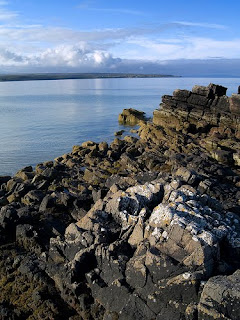
According to “Live in Scotland,” Scotland has a rich culture that has much to offer. The Scottish Government even provides funding to the arts in Scotland. There are lots of different types of culture to choose from there. It has its own ballet and opera companies. There are also many companies that tour Scotland bringing drama, music and other things to remote areas. The Edinburgh Festival, which started in 1947, is now known worldwide and attracts musicians and authors from many different countries. Scotland has a wide range of music from folk and traditional to contemporary or classical. There are almost 300 museums and galleries in Scotland. The National Galleries of Scotland and the National Museums of Scotland in Edinburgh are great art museums to go to. Admission to most museums and galleries is free, and if they do charge, it’s rarely more than 4 pounds. Of course, there are many historic buildings and monuments that are free for the public to go to. Seafood, meat, poultry, cheese, and whisky are some of the products that Scotland produces that are known to be the best in the U.K. There are all types of international food offered there. Weather in Scotland varies based on where you are. On average there is rainfall on over 250 days a year in the highlands and 175 days a year on the Angus, Fife, and East Lothian coasts. It typically rains a bit more in Scotland than it does in England, but as the article says, “It doesn’t always rain in Scotland.” It is also typically a bit colder in Scotland than it is in England. The average July temperature in Scotland is 66°F, and the average maximum January/February temperature ranges from 41°F - 59°F. The average number of days with sleet or snowfall can range from less than 20 in the west coast to over 100 days in the mountains. There are six main cities in Scotland: Aberdeen, Edinburgh, Glasgow, Dundee, Inverness, and Stirling. Aberdeen is Scotland’s third largest city, its unemployment is consistently under 2%, and in a survey done recently it was the second most prosperous city in the U.K. It is surrounded by beaches and is close to mountains offering a wide range of activities. Edinburgh is the capital of Scotland and has the strongest economy of any city outside of London. Unemployment is as low as 1.9% there. Glasgow, the largest city in Scotland, is known for its tourism, culture, and shopping. The city is surrounded by some of the best scenery. Inverness was ranked fifth out of 189 British cities for its quality of life. Their economy is dominated by the high-tech sector, and there are many students living there due to the first class schools. Stirling is the smallest city in Scotland, known for its historical heroes.
This article relates to my topic because I am not sure if I would want to move to England, Scotland, or Wales. The first two articles that I have read seemed to focus on England or the United Kingdom as a whole so it was nice to read an article that focused on Scotland. The temperatures in Scotland seem pretty mild which is something that I prefer. I also think it is great that museum prices are relatively low or free because some museums in the U.S. can have pricey admission fees. I was hoping that the website would have a little more information on the cities, but it did provide new information because I knew little about the cities before I read this article.
"Live in Scotland." Scotland is the Place. The Scottish Government, n.d. Web. 8 Apr 2010. http://www.scotlandistheplace.com/stitp/85.3.14.html.

I have a friend who studied abroad in Edinburgh. She loved it. 50/50
ReplyDelete